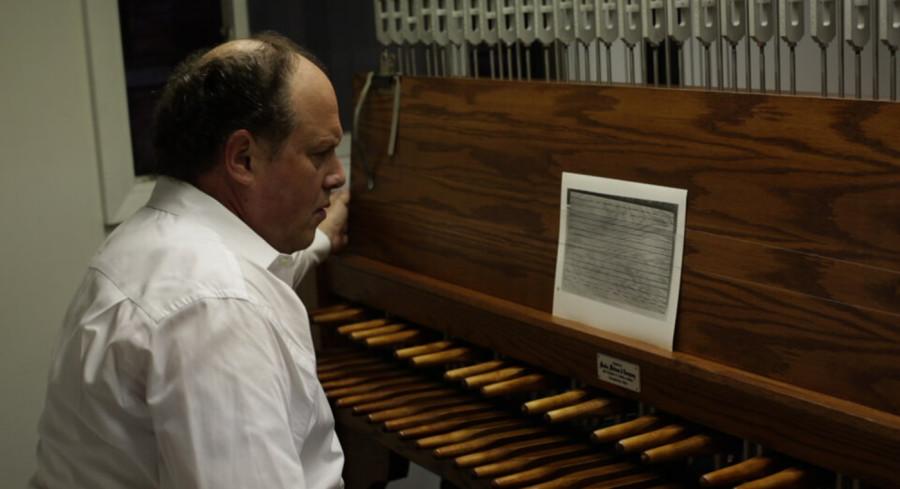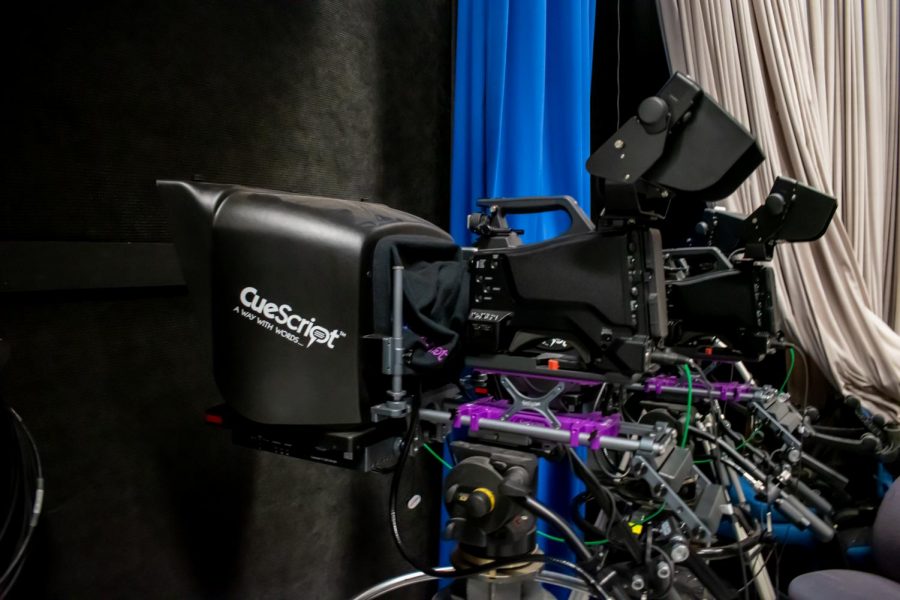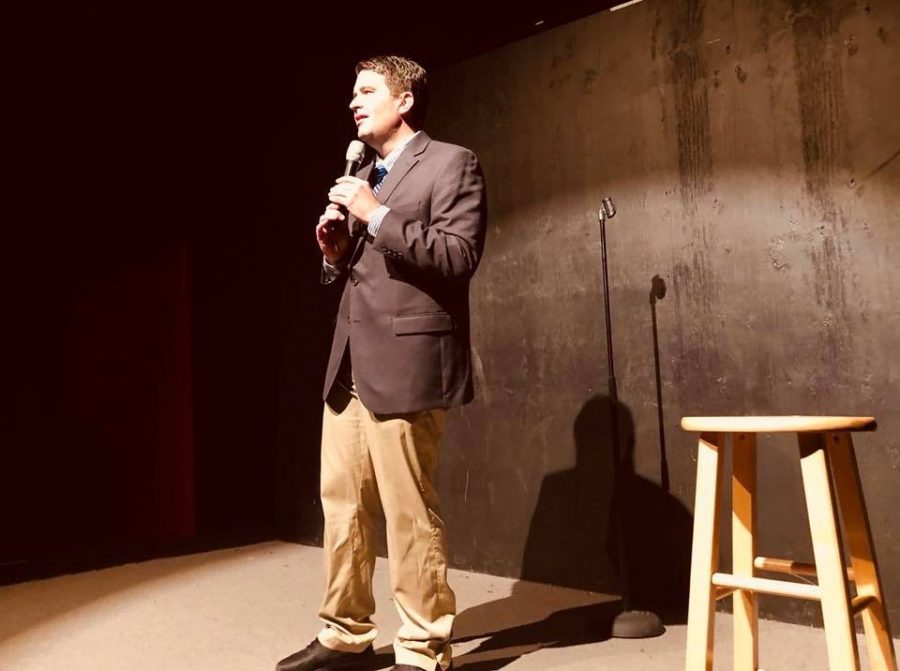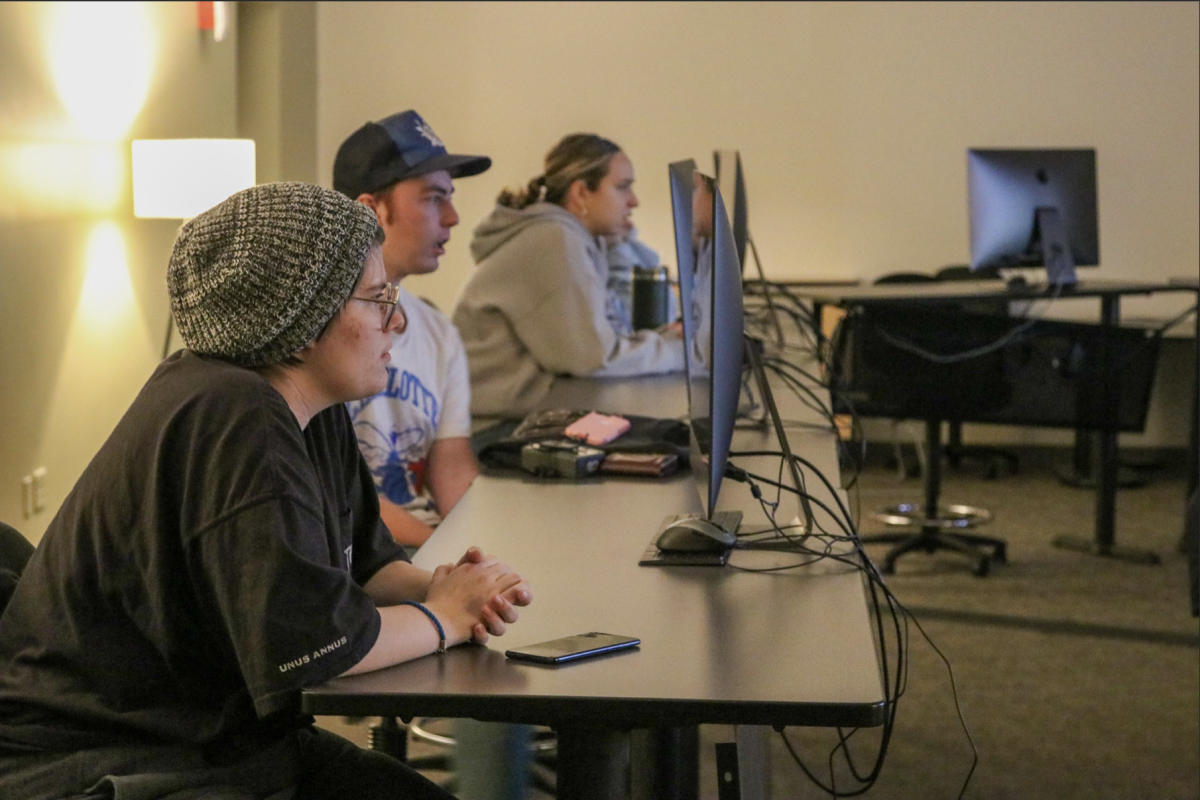Last summer, digital media professor Joe Brown moved to Milwaukee to teach. After moving to a new city and the arrival of his first child, he wanted to film something simple. Brown saw the Bell Tower in Marquette Hall and videos of people playing on the carillon, and thought it would be a great afternoon shoot.
“For Carillon No. 5″ is Brown’s first film premiering at the Milwaukee Film Festival. It features Mark Konewko, Marquette’s Chorus Director and Carillonneur, playing John Cage’s 1967 musical piece. Various shots of the bell and the carillon cut back and forth, along with Konewko playing the instrument and the Bell Tower outside of Marquette Hall.
It took Brown a long time to edit his film. He finished shooting last year, and got a lot of footage.
“The whole performance was about twenty five minutes, but I cut a seven minute documentary out of it.”
Both Brown and Konewko want to release the full performance, but Brown stated that it might not play as well at festivals.
Konewko has been at Marquette for 17 years acting as the resident Carillonneur and has been the choir director here since 2010. He was introduced to the carillon by Robert Lodine, a former professor of his at the University of Chicago. When Konewko heard Lodine play, he was always interested in bells and the history behind them and wanted to learn how to play it.
The carillon at Marquette consists of 48 different bells. Although the tower was completed in 1923, the bells were not added until 1987. The carillon produces sound with the help of a keyboard that connects to the inside of the bells.
“We didn’t want to do just the performance, we wanted some kind of artistic interpretation of what was going on,” Brown said. “The idea is that you mostly listen to the music, but the visuals are supposed to support it.”
Assisting Brown in his short film were a couple of his students. He reached out to students from his production classes and students that have previously worked with him on film projects. George Bicknell and Brian Mohsenian, both seniors in the college of communications helped set up shots inside the television studio in Johnston Hall. While they were not initially involved with filming the performance, they helped with secondary shooting for the film, meaning they set up shots on the dolly, an object that allows the camera to move back and forth.
“Joe is an enthusiastic and knowledgeable professor here at Marquette, but he is also a very talented editor and documentary filmmaker,” Mohesnian said.
Brown balances his time between shooting footage for his documentary, teaching classes about advanced production shooting and editing and spending time with his family. Brown and his students attended the Milwaukee Film Festival at the Avalon Theater to watch the debut Sunday evening.
“It was really exciting not only to have our own reserved seats, but to see his work displayed on the big screen for a large crowd that filled the theater,” Mohesnian said.
When it comes to producing documentaries, Brown has an interesting way of finding his subjects. “I used to read newspapers, look for articles, look for issues and then kind of see if there was something that I can produce, and then augment about what was going on in the news,” Brown said. “The number one thing for me now is to find interesting characters.”
He is currently working on a documentary about a former arsonist reentering to society and working to end wolf hunting after being on probation for 10 years.
“To some extent, it’s a bit of a redemption story,” Brown said about his subject.
Filming is still taking place, and will probably take another year or two until it is complete.
Brown is also the director of the Great Lakes Environment Film Festival (GLEFF) that began last year, and is planning its second event this April.
“It’s always an inspiring experience being able to work with Joe,” Mohesnian said. “I appreciate every chance I can get to continue learning from him.”








